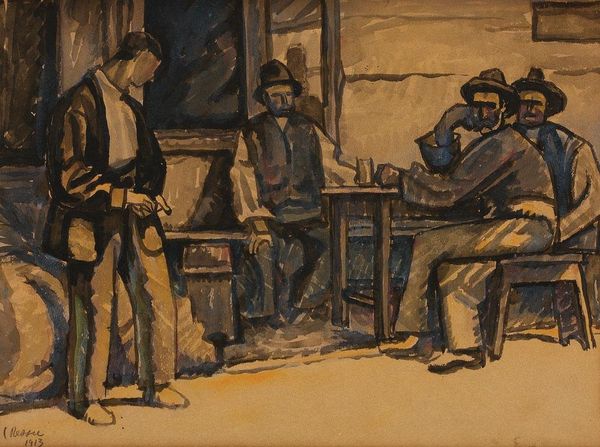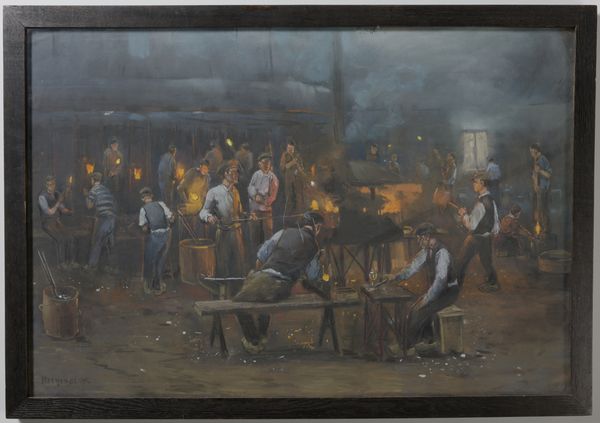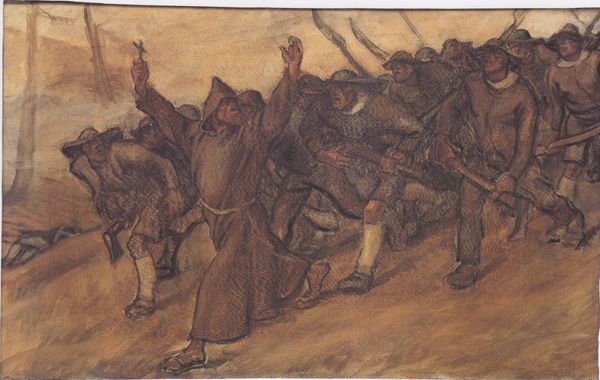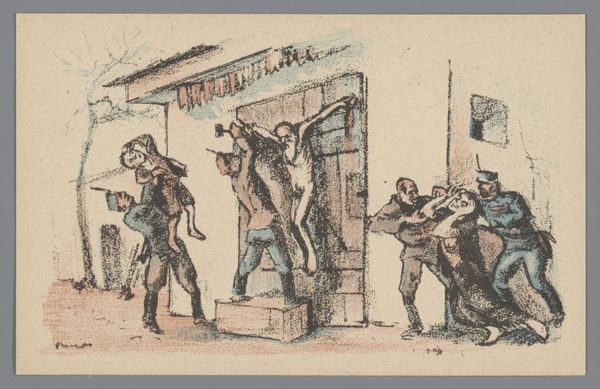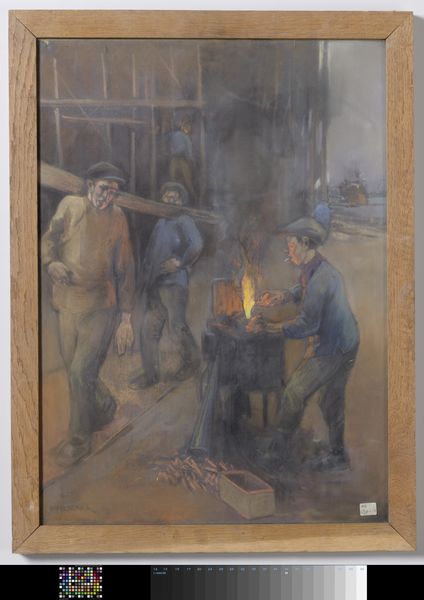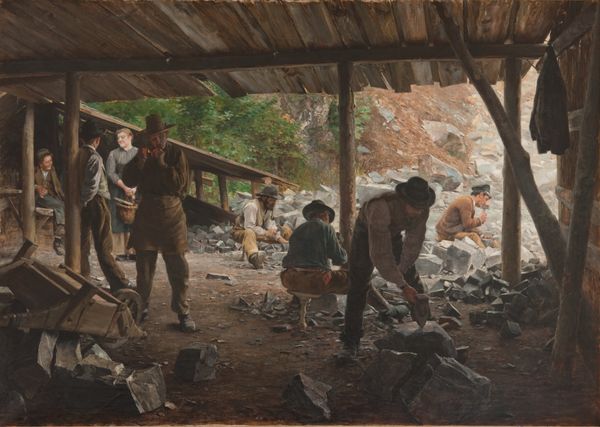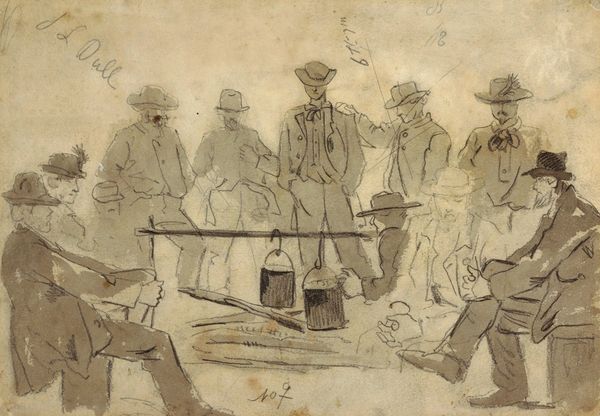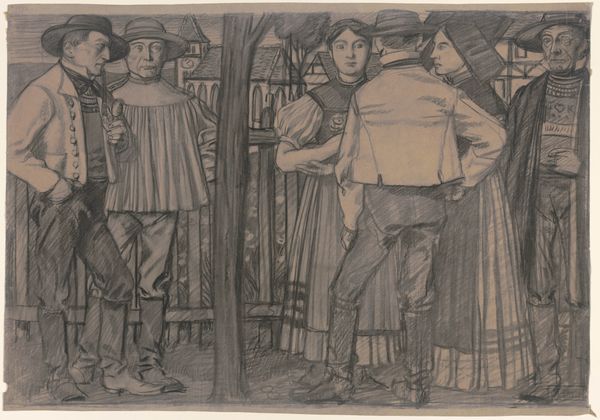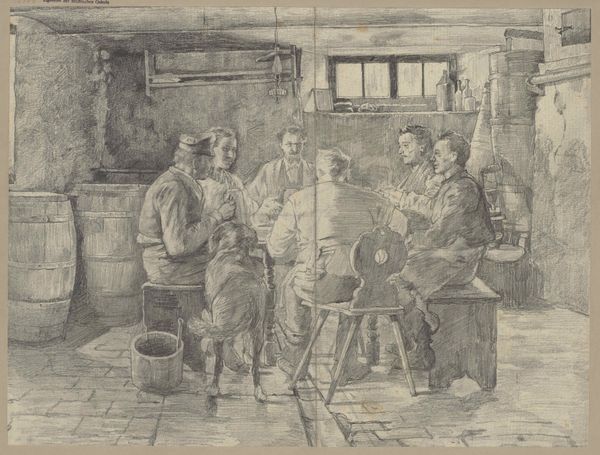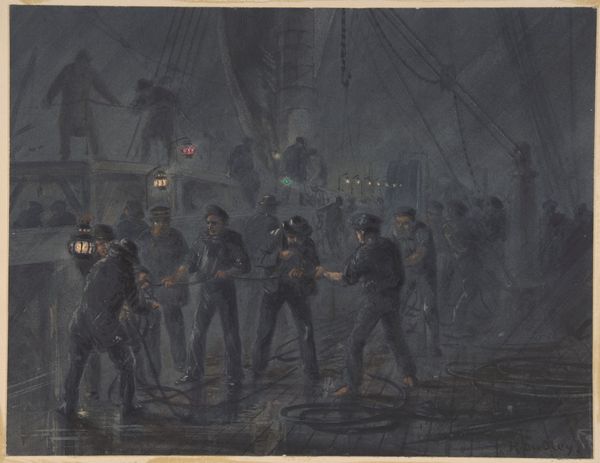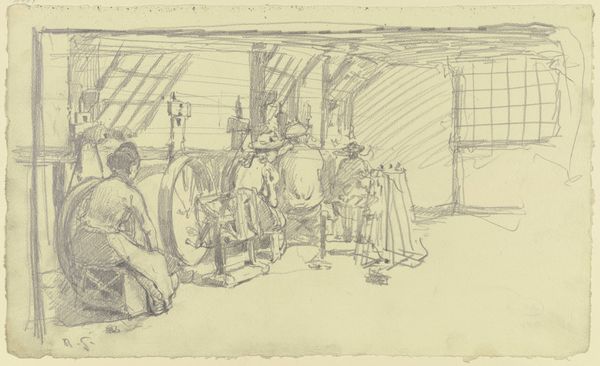
Copyright: Public Domain
Curator: Up next we have Rudolf Gudden's "Farbstudie für die Große Spinnerei von Edam," created around 1894. It's a watercolour and charcoal drawing. What's your initial take on this one? Editor: It evokes a sense of weary routine, doesn't it? The muted palette and the repetitive poses of the workers... it feels almost claustrophobic despite the implied scale of the factory. Curator: Gudden's piece provides a glimpse into the industrial landscape of the Netherlands during that period. We can see how genre painting captures scenes of everyday life; think Millet, but relocated to an Edam factory. Editor: Yes, but unlike some romanticized depictions, this has a stark realism. The way the light catches the dust motes in the air feels… gritty. It’s a potent representation of labor, wouldn’t you agree? A critical one? Curator: The politics of imagery are undeniable. How might we interpret this work in relation to broader conversations on gender and labor during that era, considering the figures within the space, specifically the women. It’s important to situate this art within those intersecting narratives. Editor: Exactly! Who were these women? What agency did they have within this system? What were their experiences within what was the social fabric of the time. I wonder, what were Gudden's intentions, did he hope for it to inspire social action? Curator: That's a compelling question. I believe Gudden aimed to bring a sense of urgency and call attention to the conditions present during that historical period. Editor: Well, for me, it still resonates. Art has the power to illuminate these complex relationships. It invites us to grapple with these injustices in a broader scope that, regrettably, remain in contemporary society. Curator: Precisely. Thank you for contextualizing its social implications, giving us more than just brush strokes but a critical perspective, especially on labor. Editor: It's artworks like these that demonstrate the power of connecting art history and contemporary theory; this enables us to appreciate its role within historical movements but to be vigilant towards the contemporary.
Comments
No comments
Be the first to comment and join the conversation on the ultimate creative platform.
